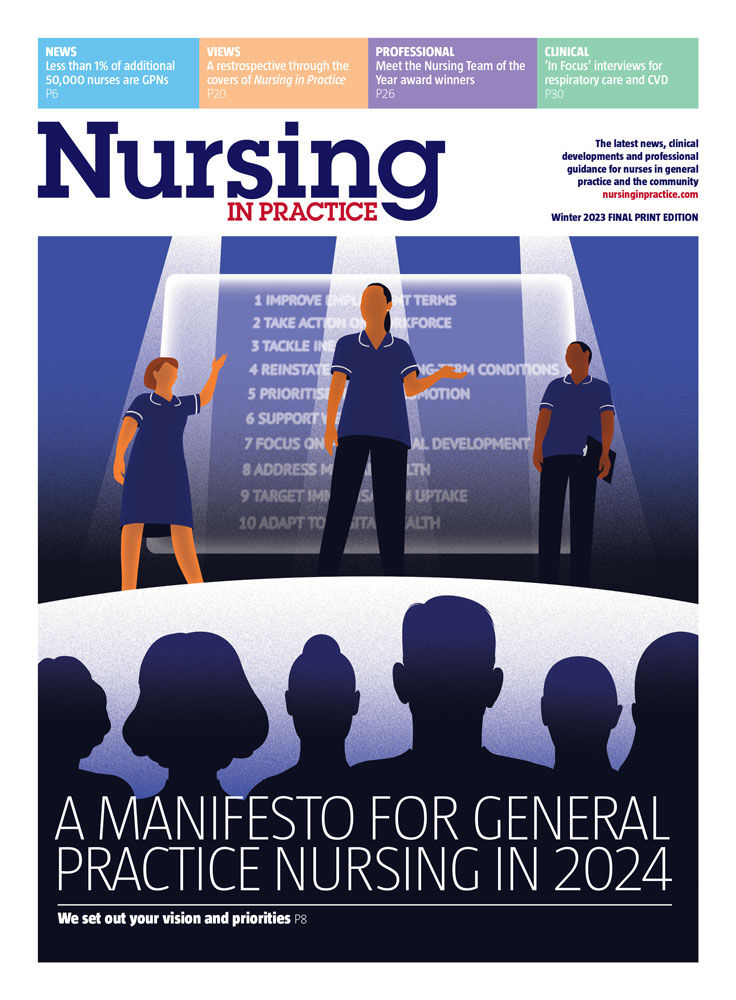Action must be taken to address the erosion of school nursing roles and services across England, sector leaders have urged.
The Queen’s Nursing Institute (QNI), the College of Medicine, and the School and Public Health Nurses Association (SAPHNA) have teamed up to campaign for ‘a school nurse in every school’.
Together, the leaders have published a report based on a round table of nursing leaders, charities and government representatives – held in December – exploring concerning gaps in school nurse support.
Data from the organisations suggested there has been a 33% fall in the number of school nurses across England since 2009.
The report, published today, said this headline figure hid variation, with some local authority areas no longer commissioning school nursing at all – described as ‘a clear instance of a postcode lottery with very serious consequences for families and for child health’.
It added that the steady decline in school nurses ‘reflects the impact of changes in commissioning arrangements within a challenging financial situation with necessitates difficult decisions’.
In 2013, the responsibility for many public health services, including school nursing, moved from the NHS to local government, under the Health and Social Care Act 2012.
Current services and school nursing resources are ‘insufficient’, the report said, adding that there was a ‘clear and worsening crisis in the physical, emotional and mental health of England’s children and young people’.
The situation was ‘creating a time bomb, endangering the future success and health of our nation’, the document added.
It quoted the most recent Royal College of Paediatrics and Child Health (RCPCH) State of child health in the UK report, which recorded increases in the prevalence of mental illness, child poverty, youth violence, poor oral health, use of cannabis and rates of suicide.
This was published in early 2020 before the Covid-19 pandemic, which the report published today said would ‘exacerbate and complicate already deep-seated problems and widening inequalities’.
Today’s report also warned that, despite the aims of the government’s Healthy Child Programme 5-19, local authorities had increasingly limited resources with which to deliver it.
As a result, school nurses were overwhelmed and having to concentrate on ‘firefighting’, ‘plugging gaps’ and safeguarding the most vulnerable, leading to a cycle of recruitment and retention challenges, the report added.
The round table called for a range of actions to address the issues, including building national political will, and encouraging integrated care boards to prioritise school nursing within healthcare strategies for children and young people.
It also said that organisations such as SAPHNA and the QNI must continue to support school nurses to voice and demonstrate their value and impact.
Dr Crystal Oldman, the QNI’s chief executive, said: ‘School nursing services have been allowed to atrophy since they were transferred to cash-starved local authorities.
‘We urgently need to invest in school nursing services that have a proven positive impact on the physical, mental and emotional health of children and young people at a crucial time in their lives. We have a duty of care that must be enacted today.’
Sharon White, chief executive at SAPHNA, added: ‘The downward trajectory of our children’s health is nothing less than horrifying.’
She pointed to re-emergences of diseases such as rickets, scurvy and malnutrition, as well as concerns over hospital tooth extractions and rises in vaping and sexually transmitted diseases among young people.
‘All of this and more can be positively impacted by urgently resourcing the school nursing workforce, who, trusted and respected by parents, children and schools alike and for relatively low investment, can change this picture and restore hope and respect for our children’s futures,’ added Ms White.
The College of Medicine’s Dr Michael Dixon, who chaired the round table, said: ‘A school nurse for every school is an ambition in the College’s Hope for the Future manifesto (2021) and this is an important step in making it happen. Participants pledged to move into action to help ensure school nursing is prioritised with investment in this highly skilled workforce.’
In an exclusive interview with Nursing in Practice, Ms White said last year that school nursing services across the country were in a ‘very vulnerable position’ regarding funding. Ongoing disinvestment in school nursing and rising absenteeism among school children were separately cited as potential causes of falling levels of vaccination uptake among young people.
The NHS long term workforce plan commits to a 48% increase in school nurses, however only relates to training places – not to funded roles.







